Jul 09, 2020, Updated Jan 20, 2021 These are commonly served as a snack or for breakfast and are most popular in South India. Best enjoyed with sambar and chutney!
I am not a huge fan of deep frying and I think I have mentioned that many times here. However, for few things I will make an exception like bhatura or dahi bhalla or this medu vada. I love these things deep fried and since I make them once in a while, I do not mind deep frying them. This Medu Vada is one of my favorite fried snack and I absolutely love it with sambar and coconut chutney.
What is Medu Vada?
It’s a popular South-Indian breakfast recipe. These vada (fritters) are deep fried and made with urad dal. The urad dal is soaked then grind to a paste and then shaped like a donut and deep fried. The batter of the vada is usually flavored with curry leaves, ginger, chilies, onion and peppercorns. Cumin seeds, cilantro, coconut can also be added to the batter. In a way, these are very similar to the dahi bhalla but that’s eaten as a sweet snack while these medu vadas are savory. The vada is usually served with sambar and chutney and you will often find this combo at south Indian restaurants. These are vegan and also gluten-free. Traditionally wet grinder is used to make the batter however I use my high speed blender since I don’t have a wet grinder and it works just fine.
Tips to Make Fluffy Vada
The biggest problem that I faced when I started making these many years ago was that the vadas would not turn out fluffy. Here’s what I have learned over the years. Do not use a lot of water while grinding the soaked dal– add just as much as you need in order to grind the batter, around 3 to 4 tablespoons should do it. Do add salt to the batter while grinding: it’s really important to add salt to the batter. Aerate the batter by whisking it using a stand mixer or hand mixer– this is very important. You can do this by hands but I prefer using my stand mixer with the wire whisk attachment and whisking it on medium speed for 4 to 5 minutes. You can also use a hand mixer or a whisk. To test if the batter is aerated enough and ready to fry, drop some batter in a bowl of water- it should float. It it doesn’t float, it means you need to whisk it more. Keep the oil temperature to medium: if the oil temperature is too hot, the vadas will cook from outside but remain raw from inside. If the oil is too cold, they will soak a lot of oil. In between frying the vadas, if the oil temperature becomes hot, I turn off the heat for few minutes, then turn on to medium again and fry. For extra-crispy vada, you may add 1 tablespoon of rice flour to the batter. I have not added any but you can for crispier vadas.
How to Shape Medu Vada
The experts just place the batter in their palms, make the hole with their thumb and drop the vada into the oil. However, if you struggle with shaping the vadas. Here’s what you should follow to make it much eaiser-
- Take a plastic sheet/cling wrap and place it on a flat bottom.
- Then apply some oil on the plastic sheet.
- Wet your hands with water and take some of the batter and place it on the piece of plastic sheet.
- Use your thumb and make a hole in the center of the vada.
- Now, carefully life the vada from the plastic sheet (since you greased the plastic with oil, it will come out easily).
- Then carefully drop this into the oil. Again, since your palms are slightly wet with water, it should not stick. If it is sticking, then you can grease your hands with little oil too. And that’s it! Make all vadas similarly and then fry them.
Method
1- Rinse urad dal dhuli (split & dehusked black gram lentil) under running water. Then soak it in 3 cups water overnight. In the morning the dal would have increased the size. Drain all the water in which the dal had been soaked and then transfer the dal to a blender. 2- Add water (3 to 4 tablespoons) and salt and grind to a smooth paste. I have used my blendtec here, you can use any high speed blender that you have. Try to use not much water while grinding the dal. 3- Transfer this to the steel bowl of your stand mixer or to a large bowl if using a whisk or hand mixer. Now, using the wire whisk attachment of your stand mixer or using a hand mixer, whip the batter for 4 to 5 minutes on medium speed. The batter will increase in volume and also become lighter in color. 4- To test if the batter is well aerated and ready to fry, drop a small portion of the batter in a bowl full of water- it should float. This means the batter is aerated and ready to fry. If it sinks, means you need to beat the batter for some more time.
5- Now, to the batter add chopped curry leaves, ginger, green chilies, chopped onion and crushed peppercorns. You may also add chopped cilantro, cumin seeds. 6- Mix until everything is well combined. Heat oil in a kadai on medium heat. 7- To shape the vada, first place a small piece of plastic sheet on a flat surface, grease it lightly with oil. Then wet your hands with water and then take some batter (size of a lemon) into your palm. 8- Transfer the batter onto the greased plastic sheet. Using your thumb, make a hole in the center to give the vada it’s traditional donut shape. (If you are an expert at this, simple shape the batter while it is in your palm and drop into the oil straight).
9- Remove the vada from the plastic sheet, it will come off easily since the plastic sheet was greased with oil. 10- Carefully drop it into hot oil. The oil should be medium hot, if it’s too hot the vada will not cook from inside and remain raw and become golden brown from outside. 11- Similarly make and shape all the vada and fry them (flip the vadas to cook from both sides in between). 12- Once they are golden brown in color, take them out of oil using a perforated spatula. Drain on a paper towel.
Serve medu vada with sambar and my favorite cilantro coconut chutney!
If you’ve tried this Medu Vada Recipe then don’t forget to rate the recipe! You can also follow me on Facebook, Instagram to see what’s latest in my kitchen!
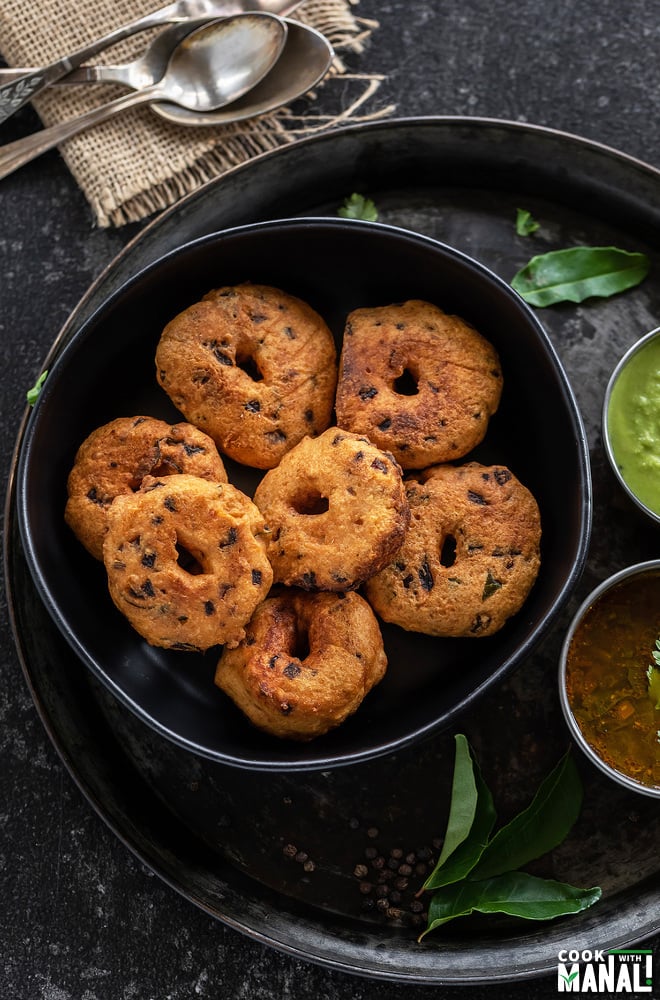
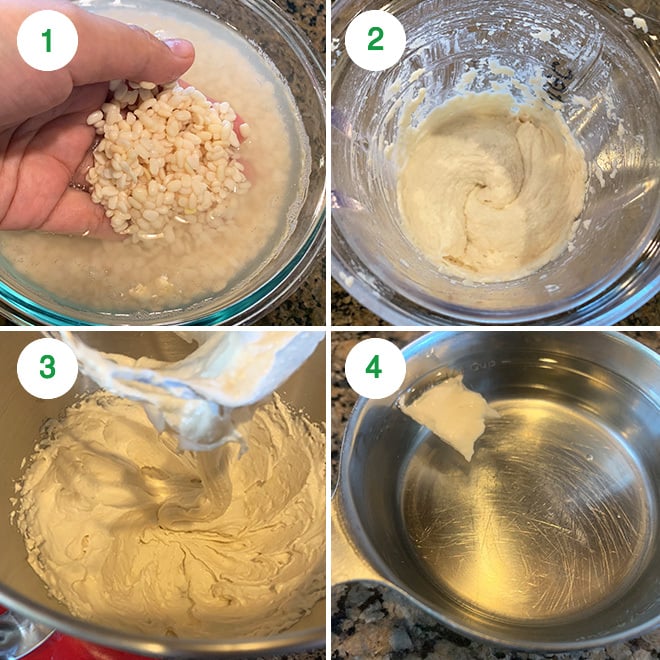
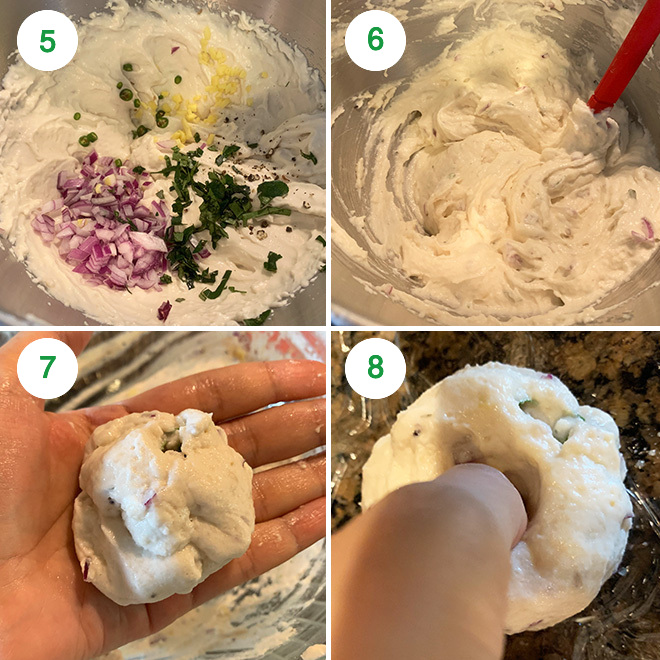
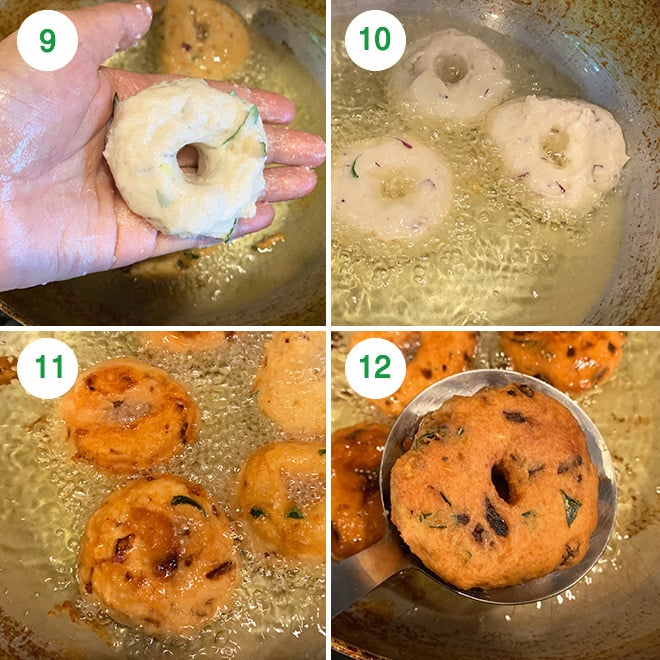
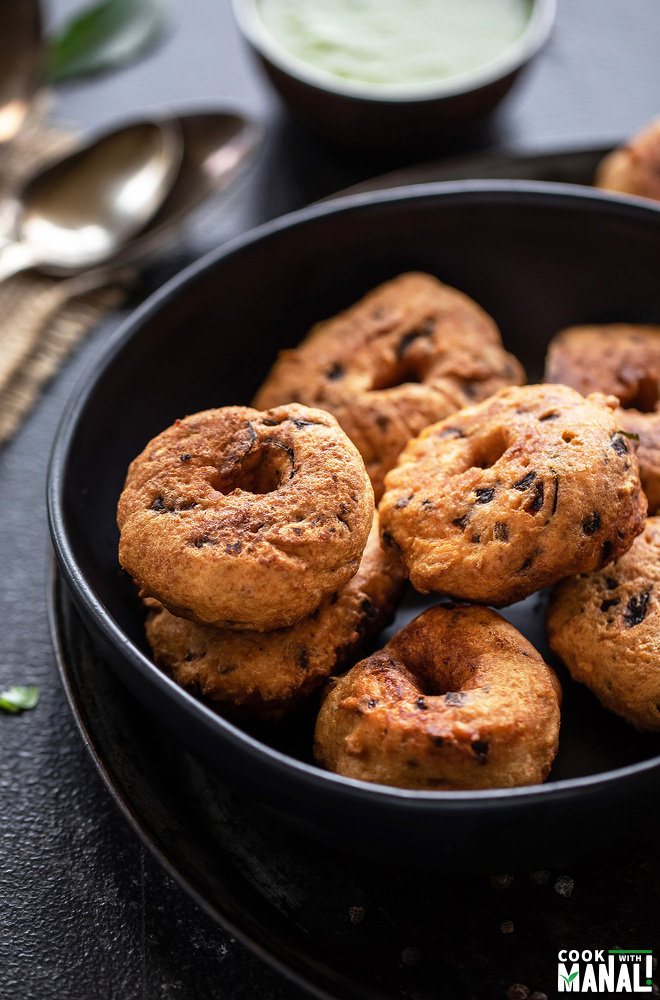
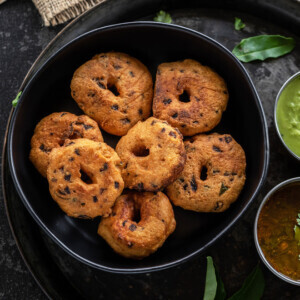
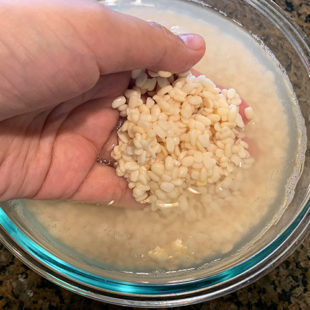
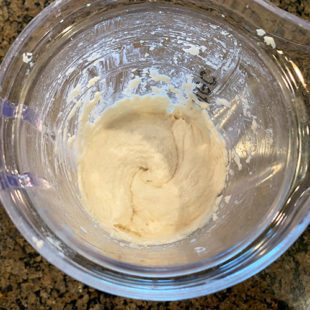
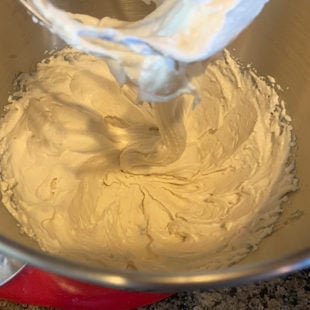
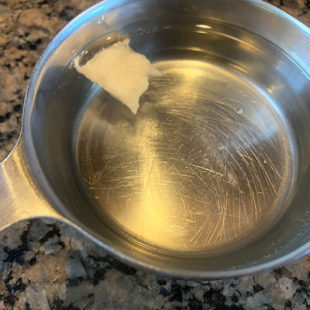
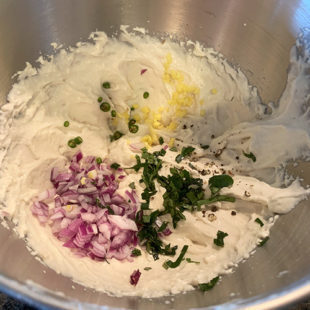
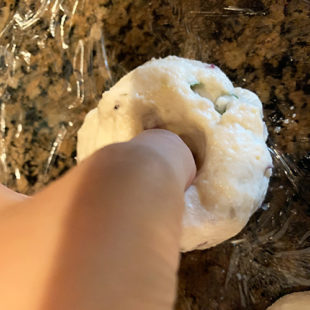
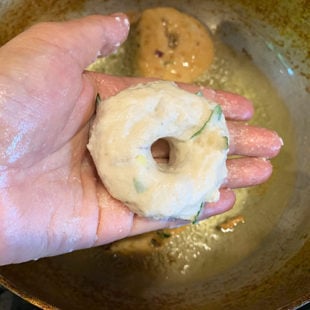
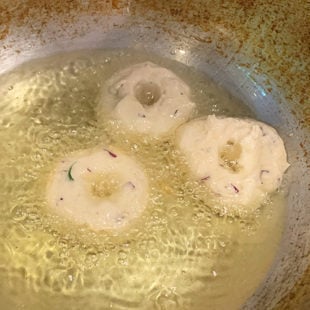
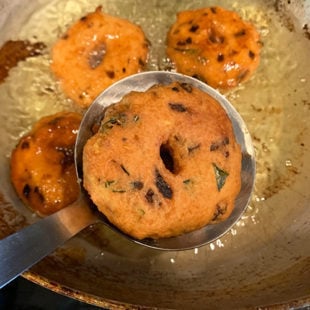
title: “Medu Vada " ShowToc: true date: “2024-10-29” author: “Christopher Hodge”
Jul 09, 2020, Updated Jan 20, 2021 These are commonly served as a snack or for breakfast and are most popular in South India. Best enjoyed with sambar and chutney!
I am not a huge fan of deep frying and I think I have mentioned that many times here. However, for few things I will make an exception like bhatura or dahi bhalla or this medu vada. I love these things deep fried and since I make them once in a while, I do not mind deep frying them. This Medu Vada is one of my favorite fried snack and I absolutely love it with sambar and coconut chutney.
What is Medu Vada?
It’s a popular South-Indian breakfast recipe. These vada (fritters) are deep fried and made with urad dal. The urad dal is soaked then grind to a paste and then shaped like a donut and deep fried. The batter of the vada is usually flavored with curry leaves, ginger, chilies, onion and peppercorns. Cumin seeds, cilantro, coconut can also be added to the batter. In a way, these are very similar to the dahi bhalla but that’s eaten as a sweet snack while these medu vadas are savory. The vada is usually served with sambar and chutney and you will often find this combo at south Indian restaurants. These are vegan and also gluten-free. Traditionally wet grinder is used to make the batter however I use my high speed blender since I don’t have a wet grinder and it works just fine.
Tips to Make Fluffy Vada
The biggest problem that I faced when I started making these many years ago was that the vadas would not turn out fluffy. Here’s what I have learned over the years. Do not use a lot of water while grinding the soaked dal– add just as much as you need in order to grind the batter, around 3 to 4 tablespoons should do it. Do add salt to the batter while grinding: it’s really important to add salt to the batter. Aerate the batter by whisking it using a stand mixer or hand mixer– this is very important. You can do this by hands but I prefer using my stand mixer with the wire whisk attachment and whisking it on medium speed for 4 to 5 minutes. You can also use a hand mixer or a whisk. To test if the batter is aerated enough and ready to fry, drop some batter in a bowl of water- it should float. It it doesn’t float, it means you need to whisk it more. Keep the oil temperature to medium: if the oil temperature is too hot, the vadas will cook from outside but remain raw from inside. If the oil is too cold, they will soak a lot of oil. In between frying the vadas, if the oil temperature becomes hot, I turn off the heat for few minutes, then turn on to medium again and fry. For extra-crispy vada, you may add 1 tablespoon of rice flour to the batter. I have not added any but you can for crispier vadas.
How to Shape Medu Vada
The experts just place the batter in their palms, make the hole with their thumb and drop the vada into the oil. However, if you struggle with shaping the vadas. Here’s what you should follow to make it much eaiser-
- Take a plastic sheet/cling wrap and place it on a flat bottom.
- Then apply some oil on the plastic sheet.
- Wet your hands with water and take some of the batter and place it on the piece of plastic sheet.
- Use your thumb and make a hole in the center of the vada.
- Now, carefully life the vada from the plastic sheet (since you greased the plastic with oil, it will come out easily).
- Then carefully drop this into the oil. Again, since your palms are slightly wet with water, it should not stick. If it is sticking, then you can grease your hands with little oil too. And that’s it! Make all vadas similarly and then fry them.
Method
1- Rinse urad dal dhuli (split & dehusked black gram lentil) under running water. Then soak it in 3 cups water overnight. In the morning the dal would have increased the size. Drain all the water in which the dal had been soaked and then transfer the dal to a blender. 2- Add water (3 to 4 tablespoons) and salt and grind to a smooth paste. I have used my blendtec here, you can use any high speed blender that you have. Try to use not much water while grinding the dal. 3- Transfer this to the steel bowl of your stand mixer or to a large bowl if using a whisk or hand mixer. Now, using the wire whisk attachment of your stand mixer or using a hand mixer, whip the batter for 4 to 5 minutes on medium speed. The batter will increase in volume and also become lighter in color. 4- To test if the batter is well aerated and ready to fry, drop a small portion of the batter in a bowl full of water- it should float. This means the batter is aerated and ready to fry. If it sinks, means you need to beat the batter for some more time.
5- Now, to the batter add chopped curry leaves, ginger, green chilies, chopped onion and crushed peppercorns. You may also add chopped cilantro, cumin seeds. 6- Mix until everything is well combined. Heat oil in a kadai on medium heat. 7- To shape the vada, first place a small piece of plastic sheet on a flat surface, grease it lightly with oil. Then wet your hands with water and then take some batter (size of a lemon) into your palm. 8- Transfer the batter onto the greased plastic sheet. Using your thumb, make a hole in the center to give the vada it’s traditional donut shape. (If you are an expert at this, simple shape the batter while it is in your palm and drop into the oil straight).
9- Remove the vada from the plastic sheet, it will come off easily since the plastic sheet was greased with oil. 10- Carefully drop it into hot oil. The oil should be medium hot, if it’s too hot the vada will not cook from inside and remain raw and become golden brown from outside. 11- Similarly make and shape all the vada and fry them (flip the vadas to cook from both sides in between). 12- Once they are golden brown in color, take them out of oil using a perforated spatula. Drain on a paper towel.
Serve medu vada with sambar and my favorite cilantro coconut chutney!
If you’ve tried this Medu Vada Recipe then don’t forget to rate the recipe! You can also follow me on Facebook, Instagram to see what’s latest in my kitchen!














